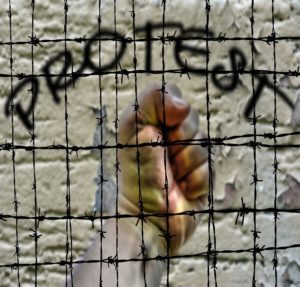 The prison conditions that led to the 1971 Attica prison uprising remain rife in today’s prisons. Overcrowding, poor healthcare, lousy food, racism, and poorly trained prison personnel churn within the caldrons of our prisons. Add to the brew elements of contrived inmate humiliation and shame, as well as lack of education and job training, and a single spark will blow the top off. That’s the story of Attica forty-five years ago. That’s the reality now.
The prison conditions that led to the 1971 Attica prison uprising remain rife in today’s prisons. Overcrowding, poor healthcare, lousy food, racism, and poorly trained prison personnel churn within the caldrons of our prisons. Add to the brew elements of contrived inmate humiliation and shame, as well as lack of education and job training, and a single spark will blow the top off. That’s the story of Attica forty-five years ago. That’s the reality now.
Background
On September 9, 1971, male inmates at New York’s notoriously overcrowded Attica Correctional Facility, a maximum-security prison in the town of Attica, New York, seized an opportunity to gain control of the facility. They took hostages—correctional officers (COs) and civilian workers—who were leverage for their negotiations with Governor Nelson Rockefeller and representatives of the New York State prison authorities. The tension-filled negotiations went on for four days.
The driving force behind the uprising was primarily the growing desperation over unbearable conditions inside. In her book Blood in the Water, Heather Ann Thompson gives a detailed account of the events leading up to the September 9 upheaval. She also lists the inmates’ demands for prison reform, which included the following:
- Apply New York’s minimum wage law to “stop slave labor.”
- Institute realistic rehabilitation programs.
- Educate COs about inmates’ needs so they understand and not simply punish inmates.
- Provide a healthy diet.
- Provide medical care upon request.
- Require less cell time and offer more recreational facilities.
The inmates maintained control of the prison from September 9 to 13, 1971. After four days of fruitless negotiations, Governor Rockefeller ordered the prison to be retaken, and during a fifteen-minute assault by state police, .
Today’s Conditions
What, if anything, has changed since Attica? In two words, not much.
- As reported in Mother Jones, in September 2016 inmates across the country synchronized one of the largest prison strikes in history. Prisoners in at least twenty-one states, including more than 800 inmates in California, refused to go to work to protest what they called “modern-day slavery.”
- Referring to the 2016 nationwide prison strike, Democracy Now! reported, “Much like the prisoners who took over [Attica] in 1971, today’s prisoners are protesting long-term isolation, inadequate healthcare, overcrowding, violent attacks and slave labor.”
My personal experiences in the California prison system (2003–2005) exposed me to Attica-like conditions. I felt like a warehoused chattel, not recognized as a human being with inherent value. Overcrowding cramps the body and the mind. I overcame the constraints on my being and my thinking by immersing myself in reading books, writing letters, working in the library, doing laundry, and helping resolve problems on the yard. Without such diversions, the time you do in prison can do you instead, leading to painful mental stress.
Men who were overcome by the stressors of cramped living and bathroom conditions became angry, depressed, and withdrawn. These men often misdirected their hatred of the system into aggressive behaviors toward other inmates and the COs. Unfortunately, no systems are in place to reduce escalated feelings of hostility—which are met with even greater hostility by COs whose only option for maintaining control is to continue with business as unusual within the prison environment.
In summary, the prison reform issues I’ve raised here include the following:
- Many of the prison conditions that sparked the Attica uprising still exist in all prisons around the country. Medical care, healthcare, educational opportunities, food quality, and basic human creature comforts are not priorities in our prisons.
- Using inmates as slave laborers does nothing but reinforce the message that they are less valuable humans because of where they are. Shame and humiliation breed in such an environment.
- The country’s state and federal prison systems are festering with pernicious Attica-like problems that need attention now.
What are your thoughts on these issues? I’d love to know your thoughts and opinions.
Image: alexskopje/123rf